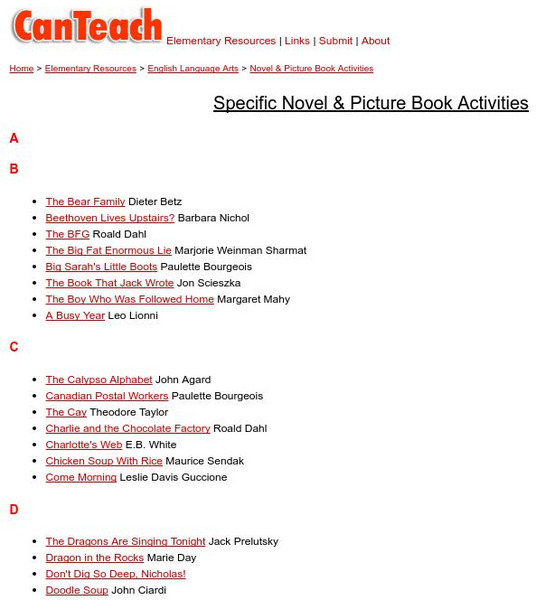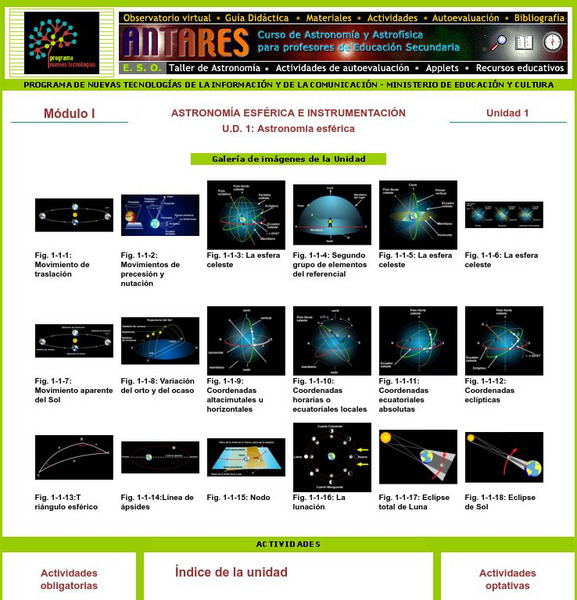Hi, what do you want to do?
Curated OER
Extensions - Astronomy Review Unit
Middle schoolers participate in a review unit in Astronomy using the Layered Curriculum. This allows them to take charge of the type of assessment that is given. The method also allows better differentiation of instruction to occur.
Science and Mathematics Initiative for Learning Enhancement (SMILE)
Smile: Models of the Earth and Moon
This lesson plan from the Illinois Institute of Technology demonstrates the causes of; day and night, seasons, and phases of the moon.With a few items, you help the elementary student discover why these phenomena occur.
The Wonder of Science
The Wonder of Science: Ms Ess1 1: Earth Sun Moon System
Develop and use a model of the earth-sun-moon system to describe the cyclic patterns of lunar phases, eclipses of the sun and moon, and seasons.
NASA
Nasa: Earth: Overview: Our Home Planet
Provides a comprehensive look at the planet Earth including photos, how Earth got its name, and facts and figures about its size, seasons, moon, atmosphere, rotation, and lithosphere.
BBC
Bb Ci Space: Earth
The BBC provides a general overview of the planet Earth. Content includes statistical information, a focus on the four seasons, moon information, and more.
Space.com
Moon Facts: Fun Information About the Earth's Moon
How did the moon form? Learn the answer to this and numerous other fun facts in this article from Space.com.
Can Teach
Can Teach: Novel and Picture Book Ideas (Lesson Plans)
Novels and picture books are great ways to teach across the curriculum. This site lists about 75 novels and picture books around which CanTeach has constructed lesson ideas and plans. All grade levels indicated.
NASA
Climate Kids: 10 Interesting Things About Earth
Discover 10 interesting things about Earth, including its shape, its seasons, rotation, Ice Ages, the Atacama Desert, gravity, changing sea levels, and the Moon.
Cornell University
Cornell University: Astronomy: Eclipses
This site from the Astronomy Department of Cornell University provides brief introduction to both solar and lunar eclipses. Links are provided for pictures and charts of the eclipses, and this is a good site to check out on the subject.
Annenberg Foundation
Annenberg Learner: Teachers' Lab: A Private Universe
This section is dedicated to educators to become expert instructors on topics like: distance between Earth, the Sun, and the moon, the phases of the moon, and reason for the seasons. Site includes information about how to address...
Ministerio de Educación (Spain)
Ministerio De Educacion: Atronomia Esferica Modulo I Unidad 1
Recognize the major constellations and learn about the sky during the different seasons of the year. You will also be able to measure the height of the mountains of the moon.
ClassFlow
Class Flow: Space
[Free Registration/Login Required] This flipchart describes what causes the seasons, explains the moon's phases, and introduces what a constellation is. It utilizes the Activotes to help describe the phenomena.
Varsity Tutors
Varsity Tutors: Web English Teacher: Ray Bradbury
Explore the world of Ray Bradbury when you visit this educational resource. Each work is hyperlinked to study guide questions.















